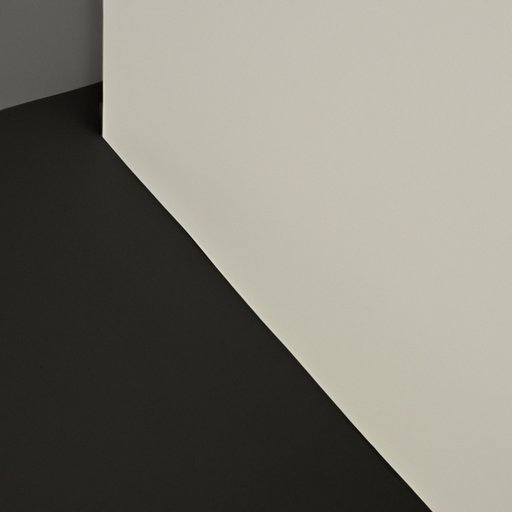Introduction
Photography is a powerful art form that has the ability to capture moments in time and share stories with viewers. One key element of photography is space – the way it is used to compose an image and tell a story. Understanding how to use space in photography can help you create compelling photos that leave a lasting impression on your viewers.
This article will explore the concept of space in photography, delving into the different types of space, using negative space to enhance photos, and capturing the scale of space in landscape photography. It will also provide tips and techniques for working with space in photography.

Exploring the Different Types of Space in Photography
The space in a photograph can be broken down into three main categories: negative space, positive space, and scale of space.
Negative Space
Negative space is the area around the subject of a photo, often referred to as “empty” or “background” space. Negative space can be used to emphasize the primary subject of a photo, creating a sense of balance and harmony. It can also be used to draw attention away from the subject, allowing viewers to focus on the other elements in the frame.
Positive Space
Positive space is the area occupied by the primary subject of a photo. This is the space that you want viewers to focus on, such as a person’s face or a particular object. It is important to note that positive space does not always have to be the focal point of the photo – it can also be used to emphasize the negative space.
Scale of Space
The scale of space refers to the size of the subject relative to the background. This is especially important in landscape photography, where the size of the landscape can convey a feeling of vastness or intimacy. By manipulating the scale of space, you can create a sense of distance or closeness between the subject and the viewer.
Using Negative Space to Enhance Your Photos
Negative space can be used to great effect in photography, but it’s important to understand how to use it properly. The key is to find a balance between positive and negative space – too much of either can make the photo feel unbalanced or cluttered.
Balance with Positive and Negative Space
When composing a photo, it’s important to consider both positive and negative space. You should strive for a balanced composition that highlights the main subject without overpowering it. Try experimenting with different framing techniques to achieve this balance. For example, you could try zooming in on the subject to reduce the amount of negative space, or you could move the subject closer to the camera to increase the amount of positive space.
Role of Negative Space in Composition
Negative space can also be used to guide the viewer’s eye towards the primary subject of the photo. By leaving some empty space around the subject, you can create a sense of tension and anticipation. This can be particularly effective when shooting portraits or action shots, as it draws the viewer’s attention to the subject.

Capturing the Scale of Space in Landscape Photography
Landscape photography is all about capturing the scale of space. To do this, you need to consider how to use depth of field, shapes, lines, and textures to create a sense of distance and perspective. Here are some tips for working with the scale of space in landscape photography.
Utilizing Depth of Field to Create Space in Photos
Depth of field is one of the most important elements of landscape photography. By using a shallow depth of field, you can blur the background and foreground, giving the photo a sense of depth and scale. Alternatively, using a deep depth of field can flatten the image, making objects appear closer together.
Working with Shapes, Lines and Textures to Generate Space
Shapes, lines, and textures are also important elements of landscape photography. Using these elements, you can create the illusion of space and distance. Look for patterns and repetition in the landscape, and use them to lead the viewer’s eye through the photo. You can also use shadows and light to create a sense of depth and scale.
Conclusion
Space is an important element of photography, and understanding how to use it effectively can help you create compelling images. In this article, we explored the different types of space in photography, discussed how to use negative space to enhance photos, and provided tips for capturing the scale of space in landscape photography. By using these techniques, you can take your photography to the next level.
Summary of Key Points
In summary, this article covered the following key points regarding space in photography:
- Negative space is the area around the subject of a photo.
- Positive space is the area occupied by the primary subject of a photo.
- The scale of space refers to the size of the subject relative to the background.
- Negative space can be used to emphasize the primary subject of a photo.
- Utilizing depth of field and working with shapes, lines, and textures can help generate space in photos.
Final Thoughts on Space in Photography
Space is an integral part of photography, and learning how to use it effectively can help you create stunning photos. Take some time to experiment with different compositions and framing techniques, and you’ll soon be able to master the art of using space in photography.
(Note: Is this article not meeting your expectations? Do you have knowledge or insights to share? Unlock new opportunities and expand your reach by joining our authors team. Click Registration to join us and share your expertise with our readers.)
